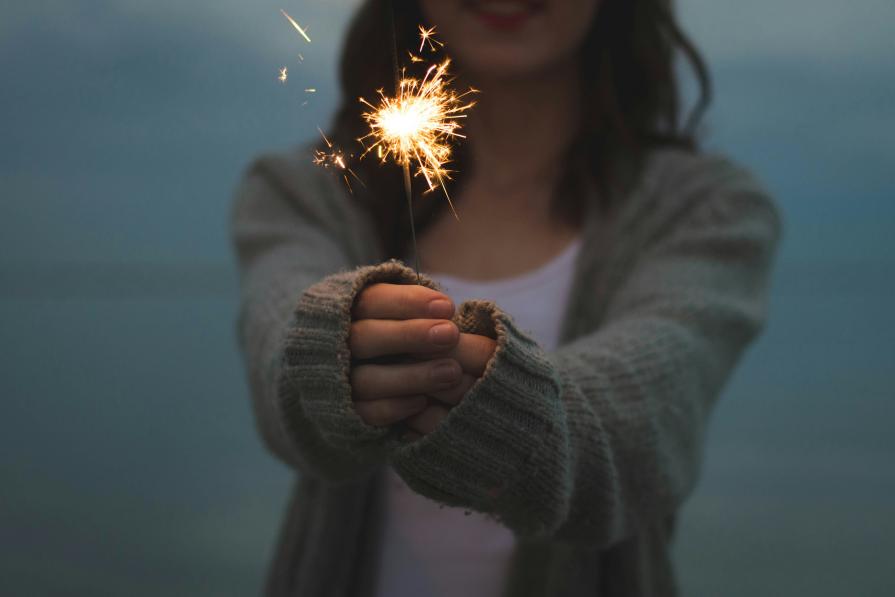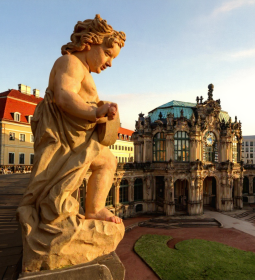Celebrating the New Year at the family table, exchanging gifts, making a wish on paper, which is then burned and drunk with champagne – traditions dear to our hearts! We are used to celebrating the New Year in this way. But what customs exist in other countries (and even in our own, just not so common)?
Broken dishes in Denmark
Danes collect all the old dishes from their cupboards and smash them against the doors of their relatives and friends on New Year's Eve. A large number of splinters at the door of the house is considered a sign of popularity and respect for the family. This is a unique tradition, but after the holidays, the locals always clean up after themselves so as not to litter.

7 Estonian meals
In Estonia, the attitude towards food and the New Year is as follows: instead of dieting or exercising, they enjoy food as they want and as they can. According to beliefs, by eating seven times on a holiday, you can provide yourself with prosperity and abundance for the whole year. It's a wonderful tradition that combines celebration with the pleasure of eating! Support!

Ecuadorian Burning Effigies
New Year's Eve in Ecuador sparkles with the lights of burnt effigies: residents create large figures filled with paper that can depict popular characters such as Homer Simpson or Peter Griffin. This ritual of burning occurs at midnight and symbolizes the purification of the past and the aspiration for a positive future.
South African-style cleaning
In South Africa, New Year's Eve is celebrated by throwing old objects out of the windows of their homes: this action is a metaphor for renewal. However, with the passage of time, the tradition has become dangerous as people have begun to throw away bulky objects, so now the government seeks to find a balance between maintaining the tradition and the safety of citizens, reminding them to stay safe during this custom.
Good luck grapes for the Spaniards
Spaniards celebrate the New Year by filling their mouths with grapes. According to tradition, if a local manages to fit 12 grapes in his mouth at midnight, the year promises to be successful. This custom is unique and cheerful, it is a symbol of hope for a favorable future. A simpler option is to eat 12 grapes for the chimes, one for each chime.
New Year's soup from Japan
In Japan, it is customary to celebrate New Year's Eve by eating the traditional ozoni soup, which is served with mochi (rice cakes) and prepared with a variety of ingredients that may vary depending on the region. This soup attracts good health and well-being in the coming year.

In Italy, old furniture is thrown away
In some areas of Italy, there is a tradition of throwing old furniture out of windows on New Year's Eve, much like in South Africa. In this way, Italians show the universe that they are ready to get rid of the past and start a new life from scratch in the new year.
Greek onion on the front door
In Greece, on New Year's Eve, they hang an onion on the front door of the house: it is considered a symbol of rebirth and growth. On the morning of January 1, parents traditionally wake up their children by lightly hitting them on the head with an onion.
Filipino Circles
In the Philippines, it is believed that the round shape attracts good luck and wealth, so on New Year's Day, Filipinos try to wear clothes with round patterns and eat 12 round fruits at midnight – one for each month of the year.
Scottish First Footing
After midnight on New Year's Day, the tradition of First Footing is practiced in Scotland: the first person who crosses the threshold of the house should bring good luck to all its residents. Traditionally, the most welcome guest is a man with dark hair, who brings "gifts": a piece of coal, bread, salt and whiskey.
New Year's Eve Underwear for Brazilians
Brazilians are distinguished by their approach to New Year's attire: while many strive for fluffiness and brightness, Brazilians prefer simplicity with an emphasis on the bright color of underwear. Their outerwear is usually white/light, but the choice of underwear color is especially important and symbolic: pink to attract love, yellow for prosperity, green for health, and so on.
Chilean New Year at the cemetery
In Chile, New Year's Eve is a time for family unity, including even departed loved ones, so people often gather in cemeteries to spend this night with the spirits of their ancestors, celebrating the holiday in their presence.
Water Battles in Thailand
New Year's Eve in Thailand is celebrated on April 13 – the holiday is known as Songkran. This day is characterized by large-scale water battles in the streets, where people use water guns, buckets, hoses, and even elephants for mutual ablutions. This bright and cheerful event is great for re-celebrating the New Year if tourists want to feel the atmosphere again.
Australian Fireworks
Australia, one of the first countries to celebrate New Year's Eve (astronomical time), is known for its grandiose fireworks displays for the holiday. The 12-minute show over the Sydney Opera House is particularly memorable. For children who go to bed earlier, there is a separate show at 9 p.m. so that they can enjoy the holiday.

German Lead Figurines
A tradition known as Bleigießen is popular in Germany, where people cast figurines made of molten lead or tin into water on New Year's Eve. The shape of the hardened figurine is interpreted to predict the future a year in advance.
Venezuelan Mass on Roller Skates
In Caracas, the capital of Venezuela, there is an unusual tradition: many residents go to morning mass on December 31 on roller skates. Even some streets are closed to cars to ensure the safety of roller skaters!
Le Réveillon Banquet in France
In France, New Year's Eve is celebrated with Le Réveillon, a sumptuous festive banquet. The meal includes delicacies such as oysters, foie gras and champagne. This is the time to gather family and friends around a large and noisy table.
Korean Traditional Hanbok Costumes
In South Korea, New Year's Eve is a time when many people put on the traditional national costume of hanbok. People gather, honor the older members of the family, and perform various ceremonies.

In Greece, they hang a pomegranate on the front door
In Greece, there is a custom to hang pomegranates on the front door of the house on New Year's Eve. According to legends, the first person to enter the house should smash a pomegranate against the door - this promises good luck and abundance for the whole year.












